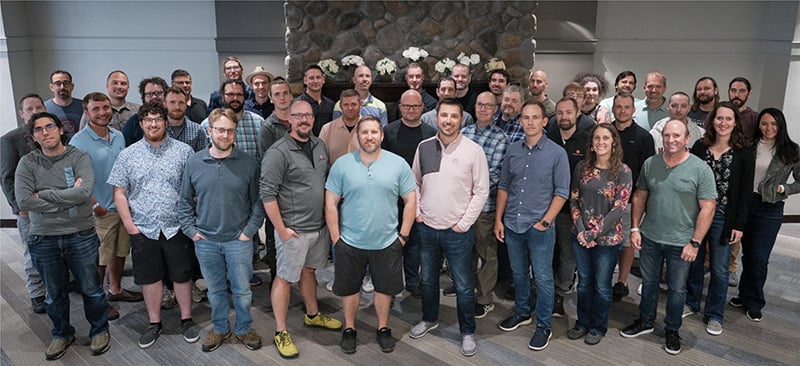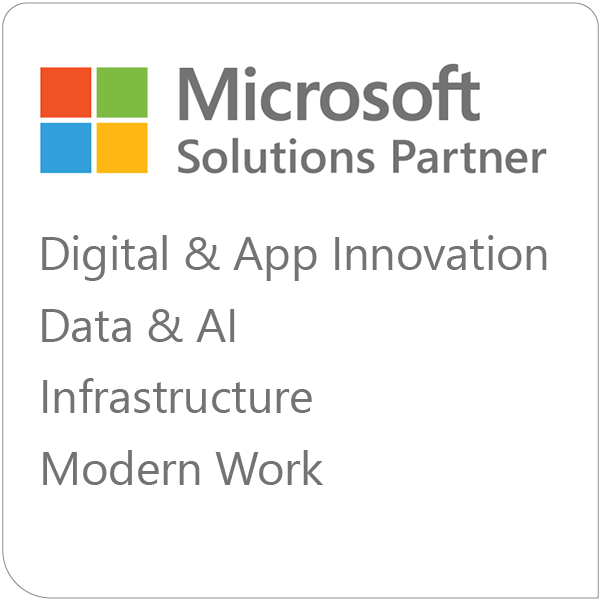In This Blog
- What Is Infrastructure as Code (IaC)?
- Why Choose Terraform?
- Key Benefits of Terraform for Enterprise Teams
- Real-World Use Cases
- How Emergent Can Help
- Frequently Asked Questions
Modern infrastructure demands speed, scalability, and consistency. Yet many organizations still rely on manual processes that are slow, error-prone, and difficult to reproduce. This is where Infrastructure as Code (IaC) becomes essential, and why Terraform stands out as the leading solution for cloud automation across platforms.
In this blog, we’ll break down what Infrastructure as Code is, why Terraform has become the industry’s preferred tool, how enterprises use it in real-world scenarios, and what benefits your organization can expect from adopting it.
What Is Infrastructure as Code (IaC)?
Before cloud automation, infrastructure setup was a manual, time-consuming process. Engineers navigated graphical user interfaces, clicked through endless “Next” buttons, and manually typed out shell commands. This approach left systems vulnerable to human error, inconsistencies between environments, and deployment delays.
Infrastructure as Code (IaC) replaces these fragile processes with scripts and configuration files. Instead of building infrastructure manually, teams define it in code that can be version-controlled, peer-reviewed, and reused. The result is a standardized, repeatable, and more reliable way to manage environments, whether they’re on-premises, in the cloud, or across both.
In today’s DevOps-centric world, speed and consistency are non-negotiable. IaC empowers teams to deploy workloads in minutes instead of weeks, and with far fewer errors.
Why Choose Terraform?
Many tools enable Infrastructure as Code, but Terraform, developed by HashiCorp, has emerged as the most versatile and widely adopted. Its appeal lies in four core attributes:
1. Platform-Agnostic Compatibility
Terraform works across all major cloud providers, Azure, AWS, Google Cloud, as well as on-premise solutions. It also integrates with dozens of services like DNS, databases, container orchestration systems, and more. This flexibility makes it a strong fit for hybrid and multi-cloud environments.
2. Declarative Configuration
Terraform uses a declarative language, meaning engineers describe the desired end state of infrastructure, and Terraform figures out how to get there. This is different from imperative tools (like shell scripts), where every step must be explicitly defined. Declarative syntax makes configuration easier to understand, maintain, and scale.
3. Built-In State Management
Terraform maintains a “state file” to track what infrastructure has been deployed and how it has changed over time. This enables it to detect configuration drift, plan changes before applying them, and prevent conflicting updates. For organizations managing multiple environments or collaborating across teams, state management is a critical safeguard.
4. Reusable Modules
Engineers can package Terraform code into reusable “modules.” A module can represent a virtual network, Kubernetes cluster, or storage account, and can be applied consistently across environments by changing only the input variables. This reduces duplication and increases consistency in deployments.
Together, these capabilities make Terraform an enterprise-grade solution for managing infrastructure at scale.
Key Benefits of Terraform for Enterprise Teams
Implementing Terraform transforms not just how infrastructure is deployed, but how teams collaborate and innovate. Here are the core benefits organizations can expect:
Faster Deployments
Engineers spend less time on repetitive tasks and more time solving meaningful problems. Infrastructure can be deployed in seconds, not hours, and updates can be rolled out with confidence.
Improved Consistency
By using version-controlled code to define infrastructure, teams ensure that environments are predictable and repeatable. Whether deploying to development, staging, or production, the process remains consistent.
Enhanced Security and Compliance
IaC reduces risk by eliminating manual configurations, which are a major source of security vulnerabilities. Teams can establish infrastructure baselines that comply with security policies and audit requirements.
Cost Optimization
Automated tear-down of unused resources prevents cloud sprawl and unnecessary spending. If a development environment is no longer needed, it can be destroyed with a single command, reducing idle costs.
Seamless CI/CD Integration
Terraform integrates easily with CI/CD tools like GitHub Actions, GitLab, and Azure DevOps. Infrastructure changes become part of the same development pipeline, encouraging better testing, automation, and collaboration.
Real-World Use Cases
Let’s look at how real organizations are using Terraform to address common infrastructure challenges.
Case Study 1: FinTech Startup Streamlines Scaling
A FinTech startup was struggling with inconsistent environments and manual deployment processes. Their Dev, Staging, and Production setups varied slightly, which led to bugs slipping through the cracks and deployment delays.
By implementing Terraform, they defined each environment in code. The only difference between them was the deployment target, not the configuration itself. With this new setup:
- Manual deployments were eliminated.
- Infrastructure was committed to GitHub and deployed through automated pipelines.
- Scaling was implemented using Karpenter and Cluster Autoscaler, enabling dynamic scaling without human intervention.
The result was faster time to market and fewer infrastructure-related issues during product rollouts.
Case Study 2: SaaS Company Navigates Multi-Cloud Complexity
A growing SaaS company was expanding across Azure, AWS, and on-premise environments. Managing multiple APIs, network configurations, and access controls across clouds created a tangled web of complexity.
Terraform helped them take control by defining reusable modules for infrastructure components like virtual networks, storage, and databases. These modules could be deployed across clouds by changing input parameters, eliminating inconsistencies and reducing overhead.
For example, deploying a virtual network simply required referencing a module and supplying environment-specific variables such as region or resource group. The same logic applied whether the environment was in Azure, AWS, or an internal datacenter.
How Emergent Can Help
Organizations often recognize the value of IaC but struggle with the initial setup, especially in hybrid environments or regulated industries. That’s where Emergent Software comes in.
We help teams:
- Identify the right IaC tooling and structure for their environment.
- Design reusable modules aligned to business needs.
- Integrate Terraform into CI/CD pipelines for safe, fast deployments.
- Establish governance practices around version control, secrets management, and state locking.
Whether you’re looking to standardize your infrastructure or optimize costs in a multi-cloud setup, we’ll meet you where you are and help you build for scale. Contact us today to learn more or schedule a hands-on demo.
Frequently Asked Questions
What is the main difference between Terraform and other IaC tools like ARM templates or CloudFormation?
Terraform is a platform-agnostic tool, which means it works across multiple cloud providers and services such as AWS, Azure, Google Cloud, and more. In contrast, ARM templates and AWS CloudFormation are tightly coupled with their respective cloud ecosystems, Azure and AWS, which limits their flexibility in multi-cloud environments. Additionally, Terraform uses HashiCorp Configuration Language (HCL), which is more human-readable and easier to work with than the verbose JSON used by ARM templates or the YAML format often used by other tools. This makes Terraform not only more versatile but also more accessible for teams that need to manage infrastructure across varied platforms.
How does Terraform handle secrets or sensitive data?
Terraform supports multiple strategies for managing secrets securely. It integrates seamlessly with secret management tools like Azure Key Vault, AWS Secrets Manager, and HashiCorp Vault, allowing developers to retrieve sensitive data dynamically at runtime. Sensitive values can also be marked in code using the sensitive = true attribute, which prevents them from being shown in logs, state files, or the output of a plan or apply command. Additionally, Terraform encourages the use of remote backends with encryption and versioning, helping teams avoid the common pitfall of hard-coding secrets into configuration files or version control.
What are Terraform modules, and why should I use them?
Terraform modules are reusable collections of configuration files that encapsulate specific infrastructure components. For example, you could build a module for provisioning a virtual network or spinning up a load-balanced web application. Instead of rewriting the same logic across different projects or environments, modules let you define infrastructure once and reuse it by passing in different variables. This not only improves maintainability and consistency, but it also speeds up development by abstracting away low-level details and promoting standardized practices across teams.
How does Terraform fit into a CI/CD workflow?
Terraform integrates well with modern CI/CD pipelines using tools like GitHub Actions, GitLab CI, CircleCI, and Azure DevOps. You can automate tasks such as formatting, linting, validating, planning, and applying changes to your infrastructure as part of your deployment process. Many teams implement approval steps to review proposed changes before they are applied, ensuring alignment with organizational policies. By treating infrastructure code the same way as application code, Terraform enables teams to achieve faster, safer, and more repeatable deployments, minimizing the risks typically associated with manual provisioning or ad-hoc changes.






